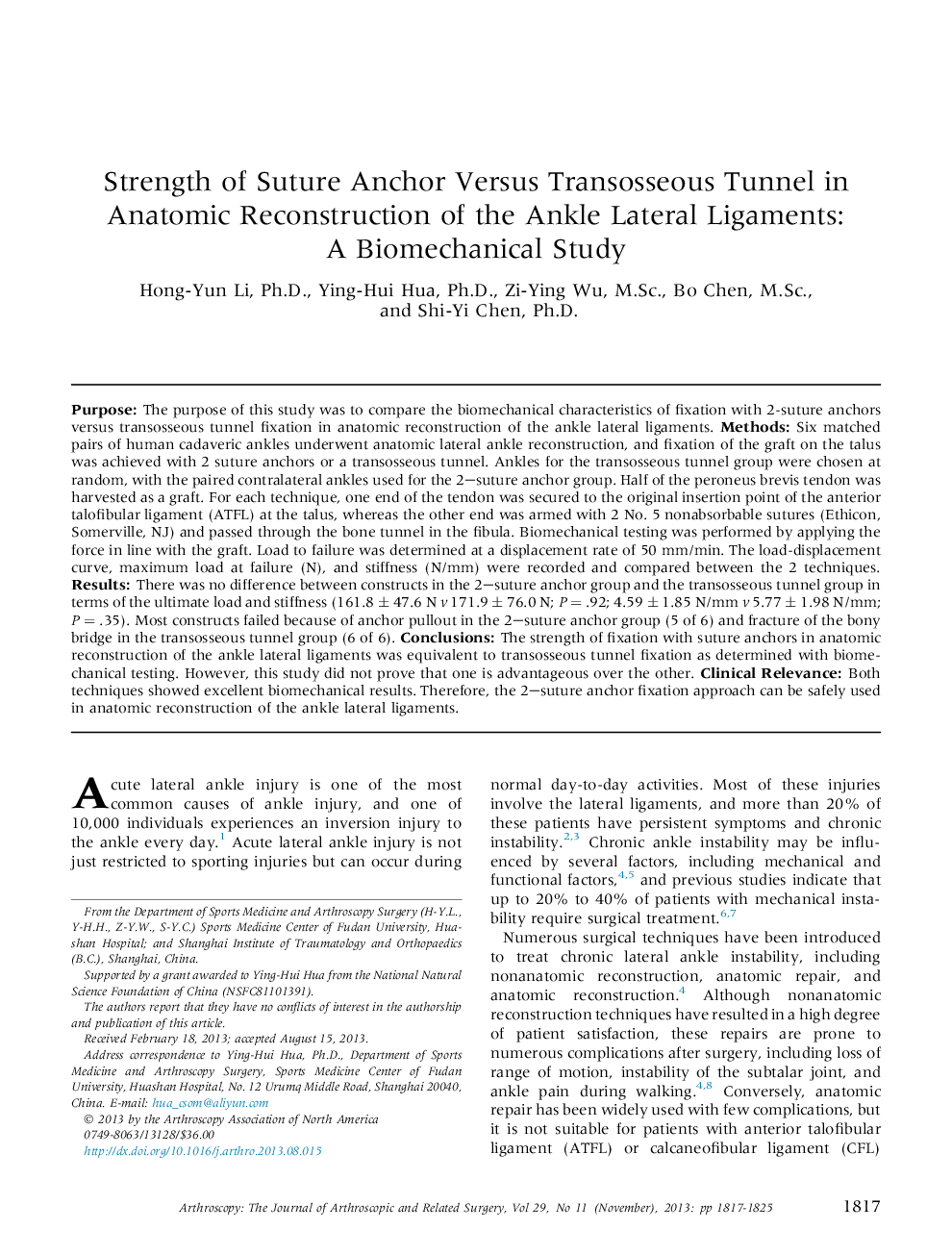| Article ID | Journal | Published Year | Pages | File Type |
|---|---|---|---|---|
| 4043727 | Arthroscopy: The Journal of Arthroscopic & Related Surgery | 2013 | 9 Pages |
PurposeThe purpose of this study was to compare the biomechanical characteristics of fixation with 2-suture anchors versus transosseous tunnel fixation in anatomic reconstruction of the ankle lateral ligaments.MethodsSix matched pairs of human cadaveric ankles underwent anatomic lateral ankle reconstruction, and fixation of the graft on the talus was achieved with 2 suture anchors or a transosseous tunnel. Ankles for the transosseous tunnel group were chosen at random, with the paired contralateral ankles used for the 2–suture anchor group. Half of the peroneus brevis tendon was harvested as a graft. For each technique, one end of the tendon was secured to the original insertion point of the anterior talofibular ligament (ATFL) at the talus, whereas the other end was armed with 2 No. 5 nonabsorbable sutures (Ethicon, Somerville, NJ) and passed through the bone tunnel in the fibula. Biomechanical testing was performed by applying the force in line with the graft. Load to failure was determined at a displacement rate of 50 mm/min. The load-displacement curve, maximum load at failure (N), and stiffness (N/mm) were recorded and compared between the 2 techniques.ResultsThere was no difference between constructs in the 2–suture anchor group and the transosseous tunnel group in terms of the ultimate load and stiffness (161.8 ± 47.6 N v 171.9 ± 76.0 N; P = .92; 4.59 ± 1.85 N/mm v 5.77 ± 1.98 N/mm; P = .35). Most constructs failed because of anchor pullout in the 2–suture anchor group (5 of 6) and fracture of the bony bridge in the transosseous tunnel group (6 of 6).ConclusionsThe strength of fixation with suture anchors in anatomic reconstruction of the ankle lateral ligaments was equivalent to transosseous tunnel fixation as determined with biomechanical testing. However, this study did not prove that one is advantageous over the other.Clinical RelevanceBoth techniques showed excellent biomechanical results. Therefore, the 2–suture anchor fixation approach can be safely used in anatomic reconstruction of the ankle lateral ligaments.
